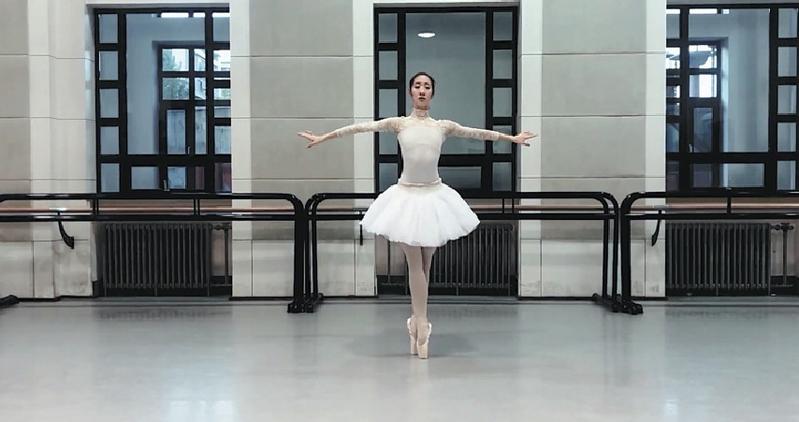 Misty Copeland performs The Dying Swan, from a video to support the global community of dancers affected by the COVID-19 pandemic. (PHOTO PROVIDED TO CHINA DAILY)
Misty Copeland performs The Dying Swan, from a video to support the global community of dancers affected by the COVID-19 pandemic. (PHOTO PROVIDED TO CHINA DAILY)
Thirty-two dancers from 14 countries came together to give a performance for a virtual audience, in a bid to mitigate the impact of the coronavirus pandemic on members of the ballet community.
They performed the iconic piece, The Dying Swan, set to the music of Le Cygne (The Swan) written by Camille Saint-Saens and performed by cellist Wade Davis.
The video, titled Swans For Relief, saw ballerinas in their pointed shoes dancing indoors and outdoors, against the varying backgrounds of living rooms, dining rooms, kitchens and garden lawns.
"Today, my fellow ballerinas and I launch Swans For Relief, a fund to support the many dancers in our global community that are no longer able to work due to the coronavirus," said American Ballet Theater principal dancer Misty Copeland, on her Twitter account on May 6. She came up with the initiative with her former colleague, Joseph Phillips.
Copeland was also the first ballerina featured in the video, who, in her tutu and toe shoes, performed the dance near her TV and couch.
"I made a point to name it by its original name, Le Cygne, The Swan. The significance of this iconic variation is in the choreography. The purpose of the dance is not to display technique but to create the symbol of the everlasting struggle in this life and all that is mortal," she said on her Twitter account.
Born in Kansas City, Missouri and raised in San Pedro, California, Copeland began her ballet studies at 13. She joined the American Ballet Theater as a member of the corps de ballet in 2001, and in 2007, she became the company's second African-American female soloist and the first in two decades, according to Copeland's official website. In June 2015, she was promoted to principal dancer, making her the first African-American woman to ever achieve the position in the company's 75-year history.
 Chinese dancer Xu Yan performs The Dying Swan, from a video to support the global community of dancers affected by the COVID-19 pandemic. (PHOTO PROVIDED TO CHINA DAILY)
Chinese dancer Xu Yan performs The Dying Swan, from a video to support the global community of dancers affected by the COVID-19 pandemic. (PHOTO PROVIDED TO CHINA DAILY)
The dancer wanted to have a diverse group for the video, so the 32 ballerinas represent 22 companies from all around the world, including China, Russia, Europe, Cuba, Mexico, the Philippines, South Africa, Canada and the United States.
The National Ballet of China and the American Ballet Theater have held cultural exchange events, which enabled the two companies to build a friendship
One of the ballerinas featured in the video is Xu Yan, a 25-year-old Chinese dancer with the National Ballet of China, who performed the piece at the company's rehearsal rooms in Beijing.
"About two weeks ago, I was invited to join in the project through a friend. Since the performance venues are closed due to the outbreak, the performing arts market is suffering. It's a great idea to interact with ballet fans and raise funds for ballet dancers, who are facing challenges now," says Xu, who joined the National Ballet of China in 2011 after she graduated from the dance school affiliated to the Shanghai Theater Academy the same year.
ALSO READ: Annual ballet workshop theme will reflect on pandemic
The dancer plays leading roles in the productions of the National Ballet of China, such as Dunhuang, inspired by the Mogao Grottoes in Northwest China's Gansu province, and Russian choreographer George Balanchine's classic three-act ballet, Jewels.
According to Xu, though Copeland has never performed with the National Ballet of China, she is well-known among Chinese dancers since she is a star ballerina.
The National Ballet of China and the American Ballet Theater have held cultural exchange events, which enabled the two companies to build a friendship. In 2015, dancers of the two companies performed Swan Lake at the National Center for the Performing Arts in Beijing.
"Art brings people together. This project certainly proves how powerful art is when we are experiencing shared emotions resulting from the spread of COVID-19," Xu says.


